Proven Corporate Social Media Strategy and Examples
Running a corporate social media marketing strategy involves more than simply publishing content.
While publishing content on the fly might work for smaller businesses, corporate social media strategies generally require much more collaboration.
For example, various department heads might collaborate with you to promote specific initiatives. In addition, you probably have a more robust content marketing team with designers, copywriters, and even videographers.
So to ensure the team meets each deadline, corporate social media strategies require structured workflows and processes.
Below, we’ll outline how you can create an effective corporate social media strategy and give several examples of highly effective corporate social media accounts.
Corporate Social Media Strategy
Here is a simple step-by-step process that any corporate social media manager can swipe to improve team efficiency.
Step 1: Create Specific Brand Guidelines
The bigger an organization becomes, the more difficult it is to align the entire team on the vision and ensure everyone promotes the same brand message.
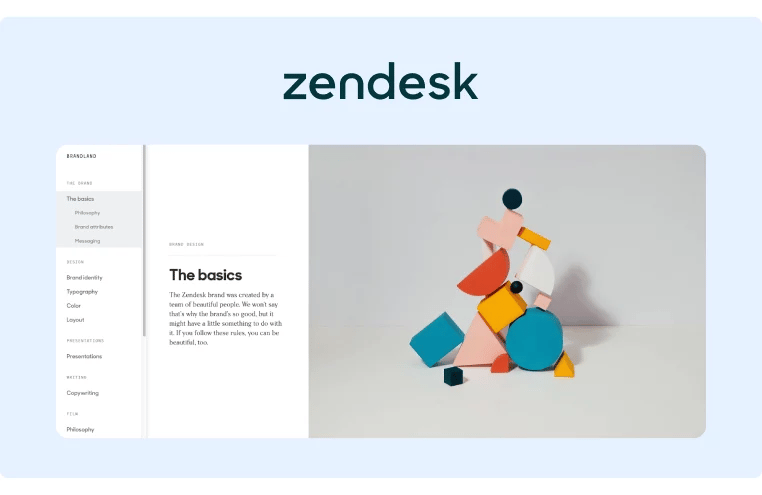
Zendesk brand guidelines (brandland.zendesk.com)
So before assigning any content, create clear brand guidelines that define your target audience, core values, and brand image. Here are a few questions you can use to guide your brand guidelines:
Target Audience
- What is the title/persona of our target audience?
- What are the main pain points of our target audience?
- What’s the general tone of voice of our audience? (e.g., do they like funny content?)
Core Values
- What do we stand for?
- What is our mission?
- How do we want customers to perceive our brand?
Brand Image
- Logo, fonts, and colors
- Brand voice
- Emoji guidelines
- Terminology (e.g., words specific to the brand)
Corporate companies should also implement a social media policy that thoroughly outlines off-limits topics and defines offensive content. This is critical for companies with larger social media followings, as unintentionally offensive content can quickly escalate into a full-blown social media crisis.
Step 2: Implement a Defined Workflow
A key difference between managing a corporate social media strategy and a small business social media strategy is team collaboration.
At a small company, the social media manager usually produces most of the content alone. However, larger corporations publishing at a higher frequency usually require a more extensive creative team (e.g., a designer, a copywriter, etc.).
In addition, you’ll probably collaborate more with third-party professionals outside your immediate creative team. For example, you might work with a third-party videographer, interview internal and external experts, or collaborate with partner brands.
These collaborations can complicate the process, and it’s easy for important deadlines and creative materials to get lost in long email threads.
To solve this, you can use a tool like Buffer, which allows you to add team members, set due dates, and keep a bird’s-eye view of project progress.
You can also schedule posts in advance to ensure each post is published at the optimal moment.

Step 3: Implement Strong Internal Communication Processes
In a small business, the social media manager usually knows about upcoming product launches and other newsworthy events.
However, managers at larger corporations usually don't have this luxury and instead need to collaborate with other department heads to stay up-to-date with the most important upcoming brand initiatives.
For example, if the engineering department is hiring, that might be a key initiative you must promote on social media.
So consider scheduling monthly check-ins with key department heads to ensure your social media strategy promotes the most important company initiatives.
Step 4: Leverage Employee Advocacy
Large corporations have one massive advantage over smaller companies: a large workforce.
So if you can convince even just a fraction of your employees to share company content with their social networks, you'll significantly increase engagement and reach.
Employee-shared content is also much more authentic than branded content, so their posts will likely receive more organic engagement from friends than the original branded post.
Here's an excellent example of employee advocacy in action:
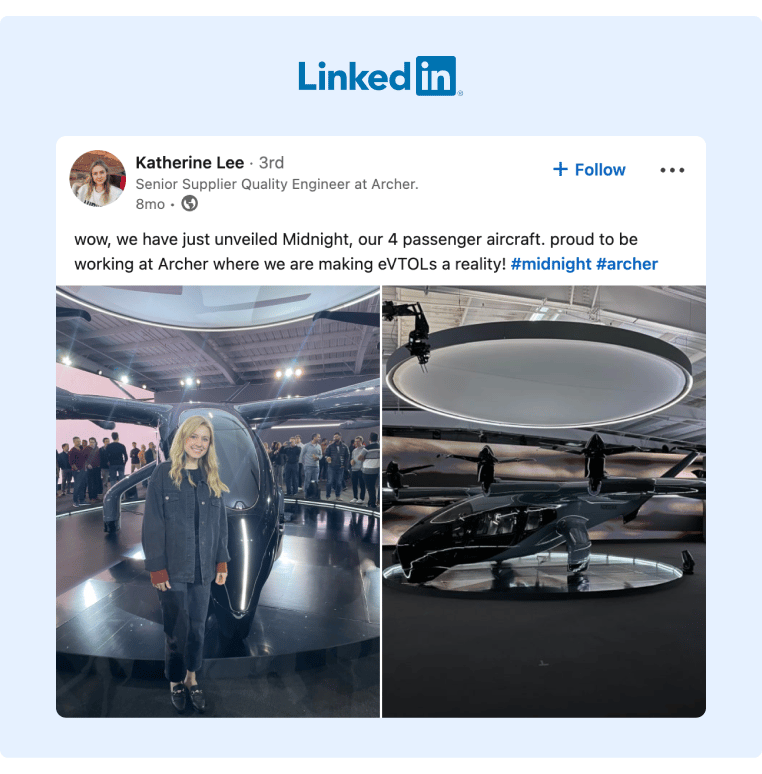
As you can see, this employee created her own content promoting the brand, though you can also ask employees to simply share content from the company page.
Shopify is another excellent example of a company that has a highly engaged workforce that continuously promotes its culture:
While both examples of employee advocacy above show how employees create their own posts to promote brand initiatives, you can also ask employees to simply share or engage with content on the business page. Here’s an example of employee advocacy with a company page post:
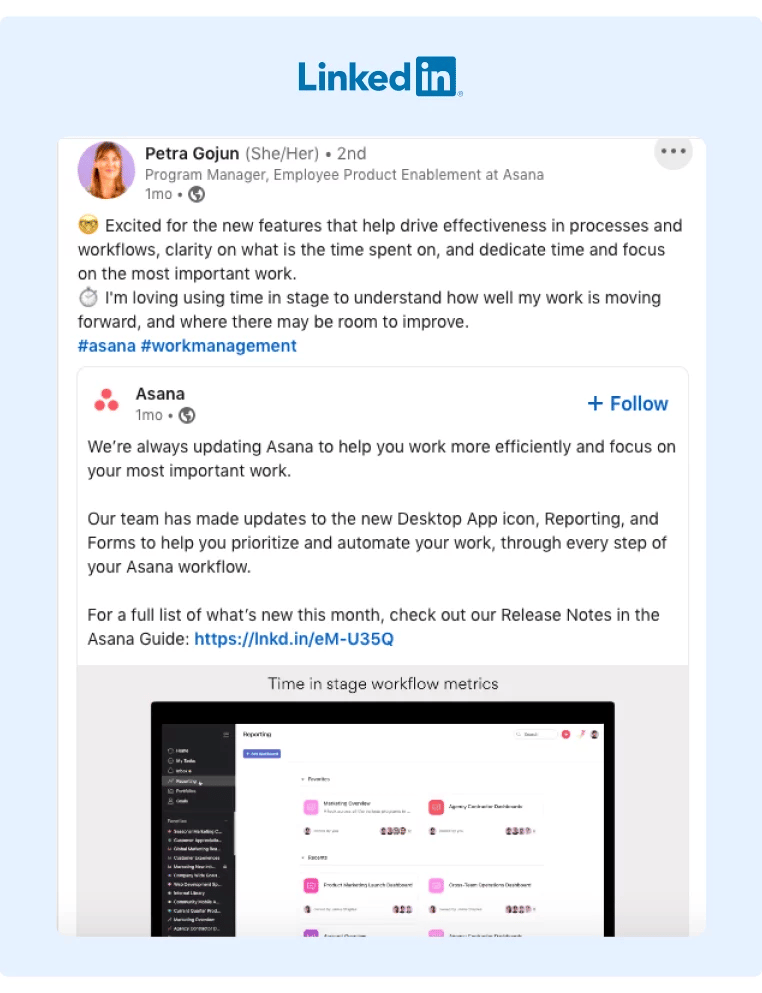 When employees jump in and engage with company content, the initial engagement sends a positive signal to social media algorithms which can help boost that post’s organic reach.
When employees jump in and engage with company content, the initial engagement sends a positive signal to social media algorithms which can help boost that post’s organic reach.
Employee advocacy is clearly an effective method to generate high-quality engagement, so why don't more companies leverage it?
Convincing employees to regularly engage and share content is challenging.
While your first few requests to share social media content and brand initiatives might be well received, engagement rates tend to drop off after a few weeks.
After all, your employees have their own tasks to complete and taking time out of their day several times per week to find company content to engage with is time-consuming.
You could probably increase engagement rates by sending individual emails with specific engagement requests to employees, though this isn't really a scalable method.
So to help you increase engagement rates and make it super easy for employees to participate in your advocacy program, we built GaggleAMP.
With GaggleAMP, you can create and assign personalized engagement activities at scale.
Simply select an engagement activity and then provide specific instructions (e.g., share this LinkedIn post, create a Tweet about this company initiative, etc.).
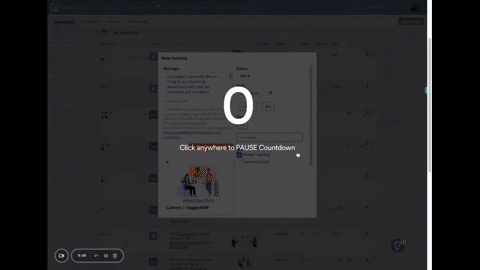
From there, you can assign it to specific employees or a group of employees. Once assigned, those employees receive a notification and can log into their personal Gaggle to view the engagement activities.
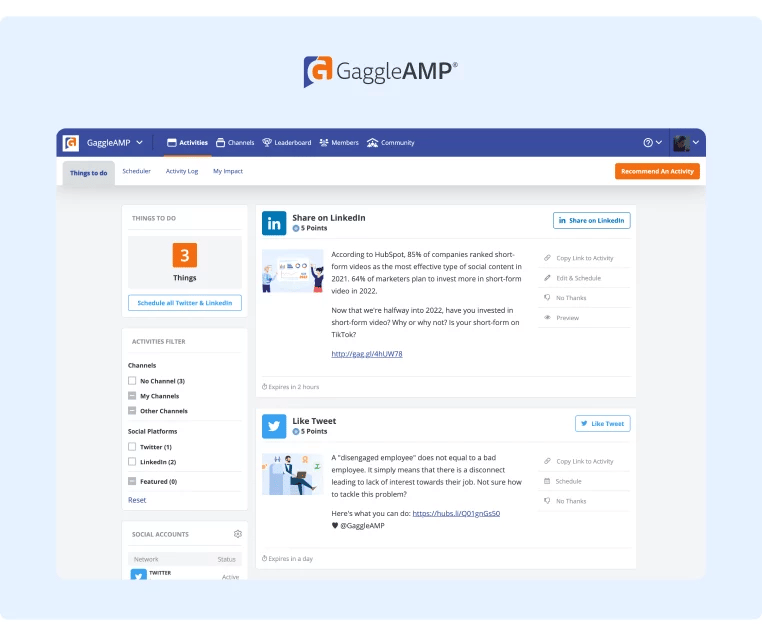
Inside the Gaggle, employees can complete the engagement activities and even schedule them to publish. This way, they can complete all their engagement activities in one sitting rather than logging into social media several times per week to engage with the content.
GaggleAMP also offers a public leaderboard that ranks employees by engagement to further encourage program participation.
This friendly competition motivates employees to participate, and it also allows you to reward them for their efforts.
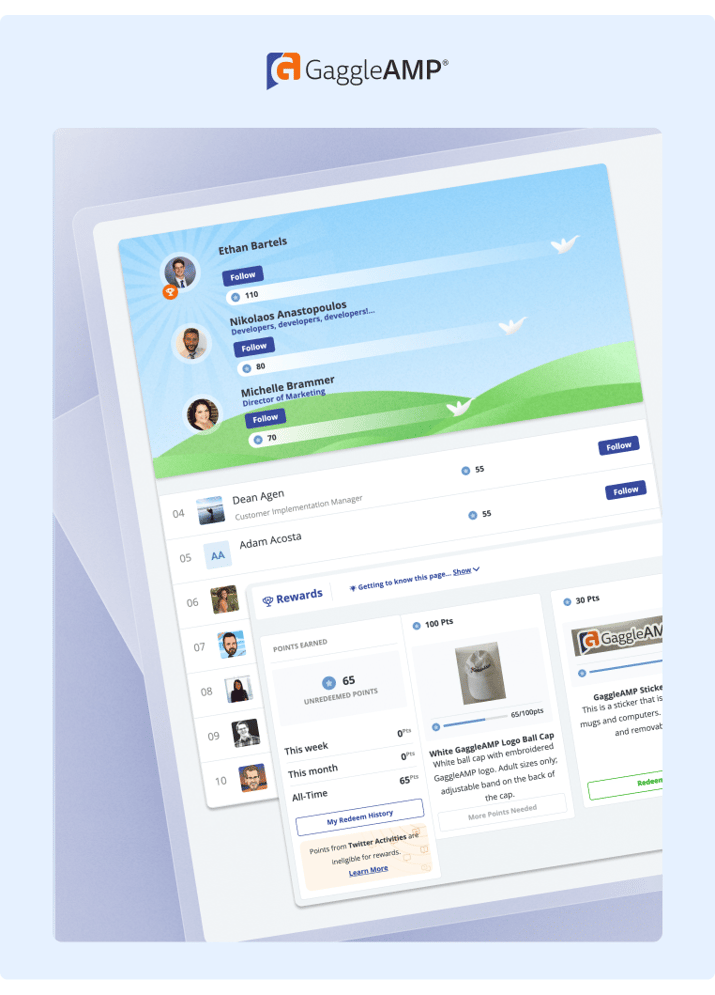
Schedule a demo today to see how GaggleAMP can help you improve employee advocacy participation, or try out the platform risk free today!
Step 4: Actively Manage Company Reputation
The bigger a company's following grows, the more likely it is to encounter reputation management issues.
While it's always important to listen to user feedback, negative comments from internet trolls can negatively impact your brand image and dissuade potential customers from trying your products or services.
To manage your corporation's reputation, use social listening tools to quickly identify negative mentions and gauge overall brand sentiment.
If you see a negative comment, first assess if it's a legitimate customer complaint. If it is, respond to it quickly by offering to help and, if necessary, provide some additional context.
Here's an excellent example of how this brand handled a negative comment:
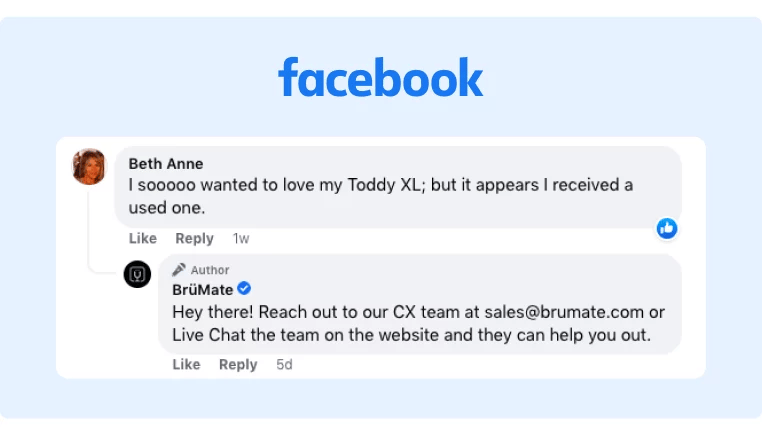
The comment above is also worth forwarding to the product department to improve quality.
However, if a comment is irrelevant or offensive (perhaps not even from a customer), you can delete it.
Step 5: Audit Your Social Media Strategy
You already know all of the social media best practices:
- Select relevant platforms to publish on and post natively
- Publish frequently (ideally daily)
- Create content that's social and valuable to potential customers – not just promotional
- Respond to comments quickly
- Use a few relevant hashtags
- Test different media types (video, text, image, etc.)
Unfortunately, most brands aren't doing these basics, usually due to resource constraints.
So, rather than trying to devise new clever strategies, audit your existing social media strategy every month or quarter and ensure that you're doing all the basics.
During the audit, identify exactly where your strategy fell apart and adjust your workflow to ensure it doesn't happen again.
After ensuring you're consistently doing all the basics, the next step of your social media audit is uncovering trends in the types of content that performed the best.
Here are just a few metrics worth tracking across all social media networks:
- Engagement (likes, comments, shares)
- Impressions
- Clicks
- Leads
It's also important to track the quality of the above metrics. For example, are the people commenting on your post in your target demographic?
This is important because while a funny TikTok video might drive the most engagement, it might generate fewer high-quality leads than a LinkedIn ad promoting a new whitepaper.
Corporate Social Media Examples
Here are a few examples of larger corporations that have mastered the game of social media marketing. We'll analyze their strategies and break down key takeaways you can steal to incorporate into your social media strategy.
Shopify
Shopify is an excellent example of a brand that has effectively embraced employee advocacy.
Their employees regularly use the hashtag LifeatShopify and share different stories about why they love working at the company:
Here’s an excellent example of an employee gushing about how much they love the Shopify culture:
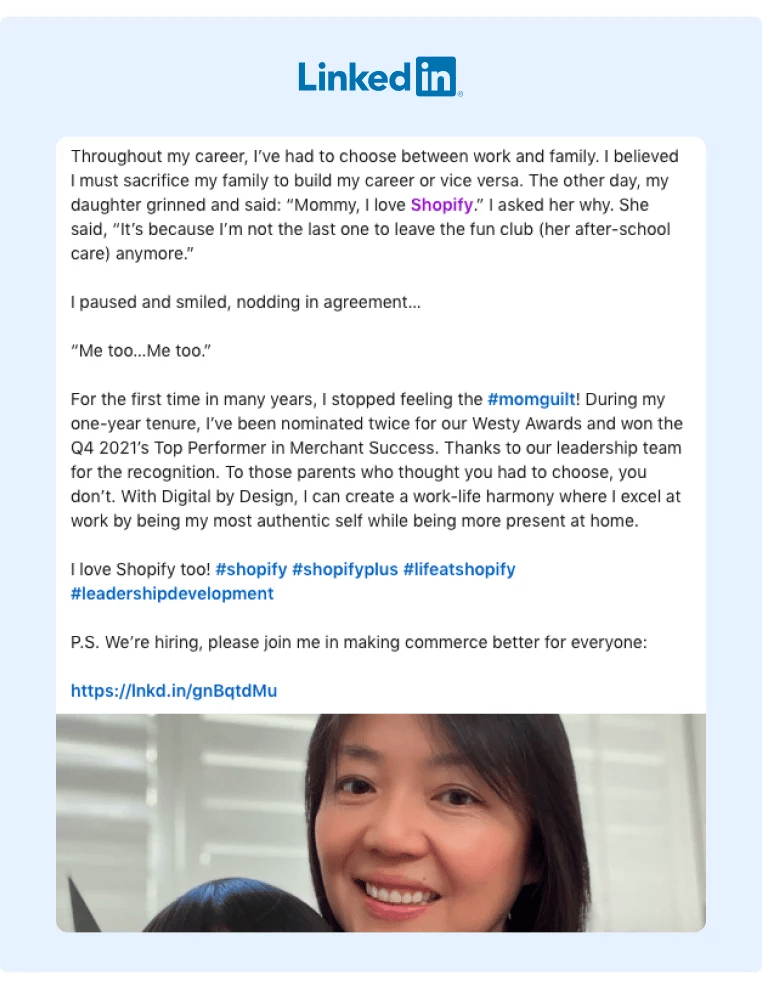
In addition to promoting the company culture, there are also plenty of great employee advocacy posts promoting the brand’s content and products, like this one:
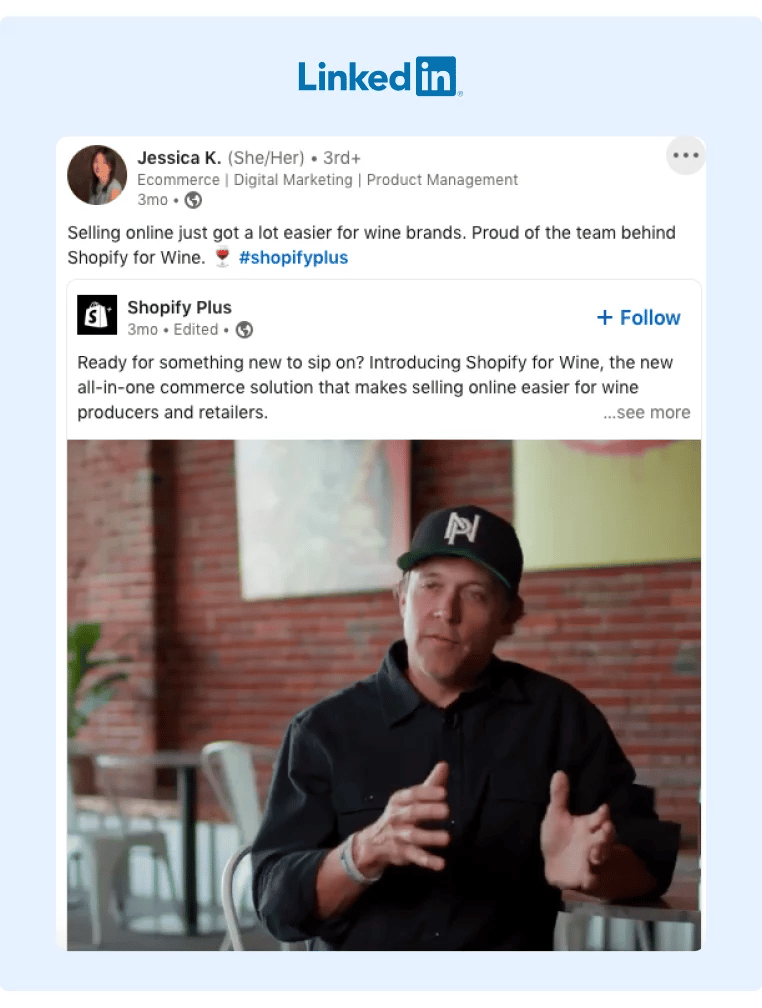
From a content perspective, Shopify invests in high quality creative production. Whether it’s a feature release or simply a post promoting company culture, the creative is always on-brand and high quality. Here’s an excellent example of a recent product launch the team was promoting:
Another strategy that Shopify uses is collaborating with influencers and hosting live stream events. Here's an example of one of the live streams they hosted on the Shopify Plus account:
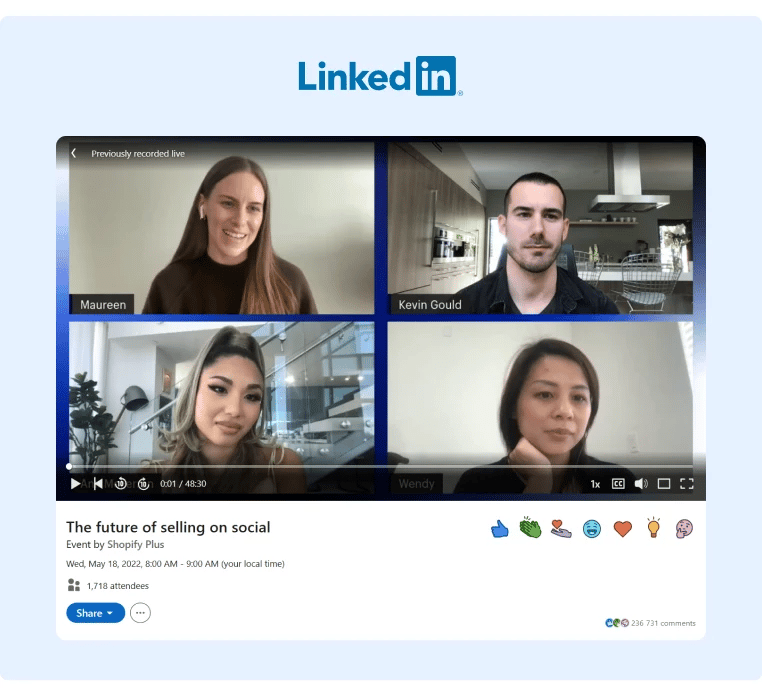
It’s also worth noting that Shopify adjusts its tone of voice for each social media platform. For example, its Twitter account is slightly more humorous than its LinkedIn account. So as you’re creating your branding guidelines, take note of how you want the brand to appear across different social media sites:

Archer
Archer is the poster child of social media success. While it has the advantage of marketing a revolutionary product (electric airplanes), they still put in the work to maximize social media buzz.
First, they use GaggleAMP to leverage employee advocacy.
Employees regularly create their own posts promoting product launches and updates, like this one:
However, they also share branded content with their audience and frequently jump into the comments to maximize organic engagement on branded posts:
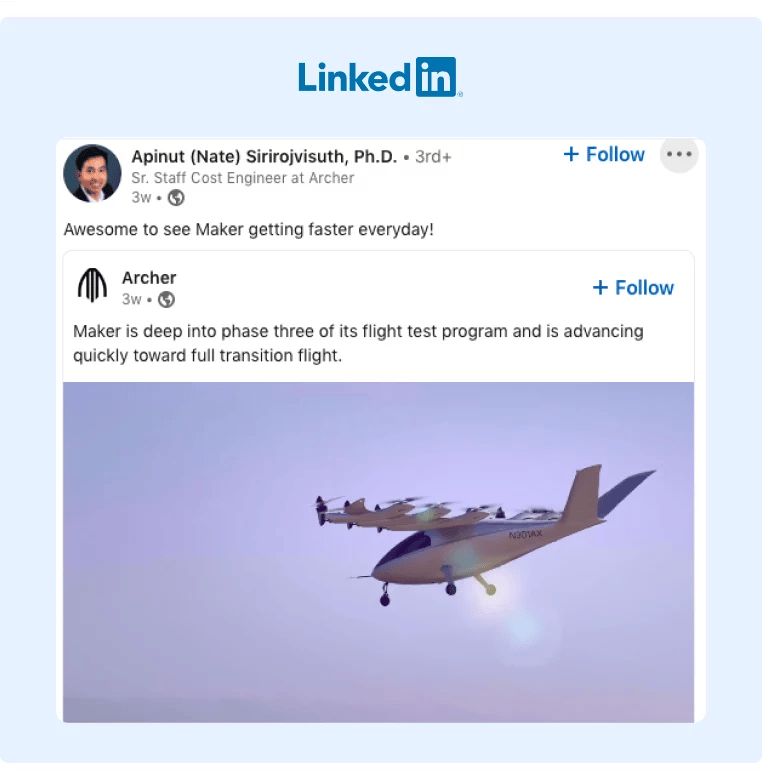
Archer is also a master of storytelling.
For example, each video they create has a cinematic style that easily draws the viewer in – even if they have no interest in airplanes.
Just check out this video promoting the new electric airplane:
Even if you don't have a product as innovative and exciting as electric airplanes, you can still create a story around your product. For example, you could take a customer testimonial and emphasize the story aspect of the case study.
It's also worth noting that Archer's branding style is very consistent. Each post uses the same sleek colors, fonts, and styles, making it easily recognizable at a glance.
Glossier
Glossier is an excellent example of an ecommerce brand that has built more than just a social media presence – they've built a die-hard following.
A quick glance at the comments shows that their customer base is obsessed with the brand:
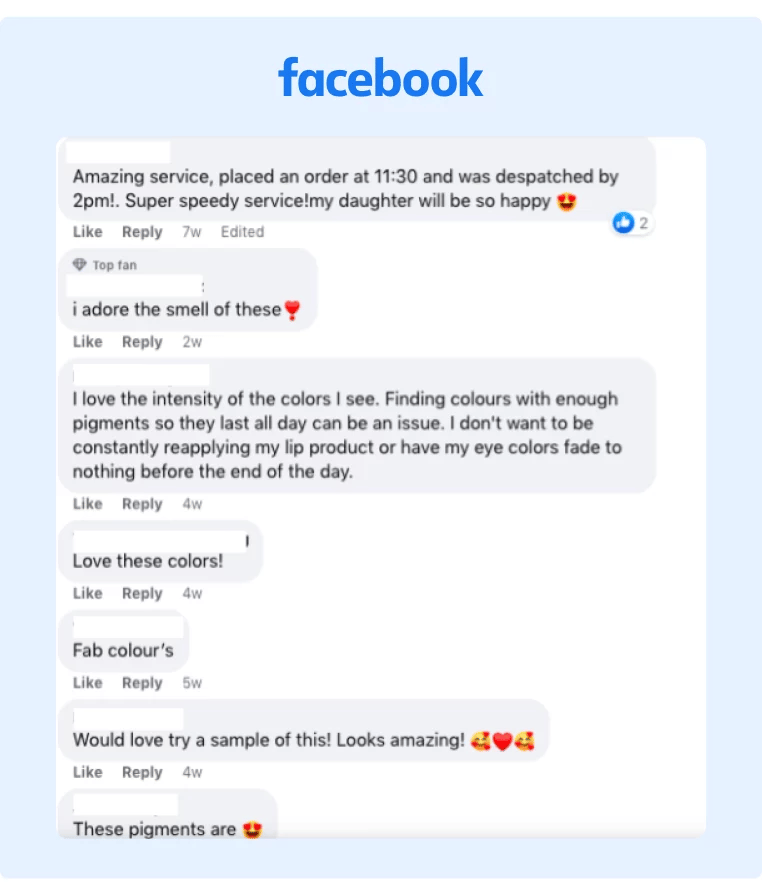
Even when there’s an issue with the product, the customers still find something complimentary to say about the brand:
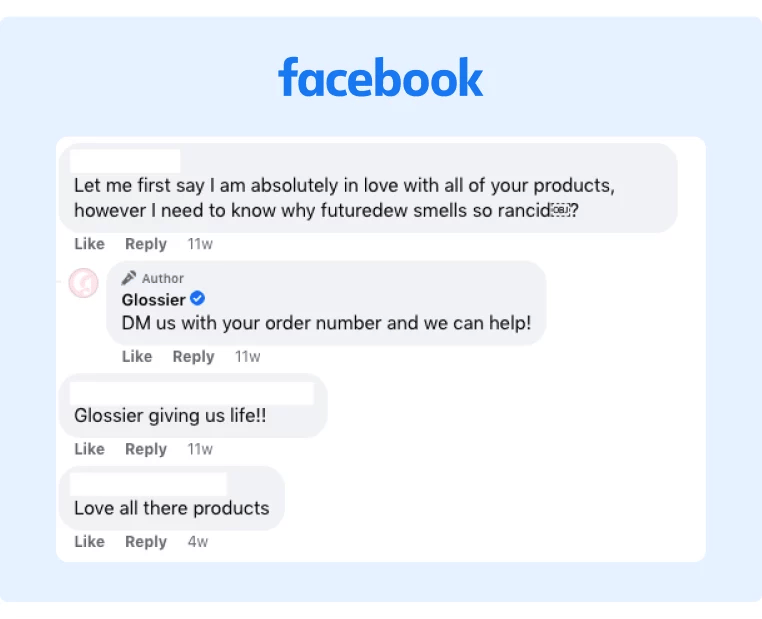
So how did Glossier build this loyal customer base?
First, they respond to comments and frequently give customers shoutouts:
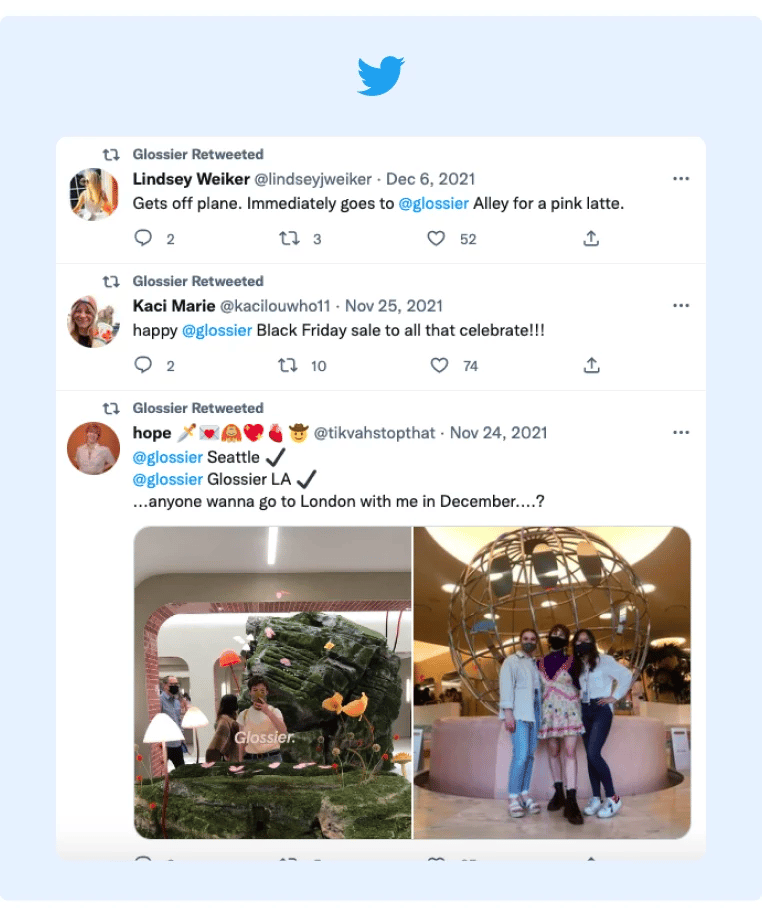
They also lean into their ideal customer’s persona and have a very defined brand voice. Here’s an excellent example:
The comments of this post also prove that they clearly nailed their customer’s persona:
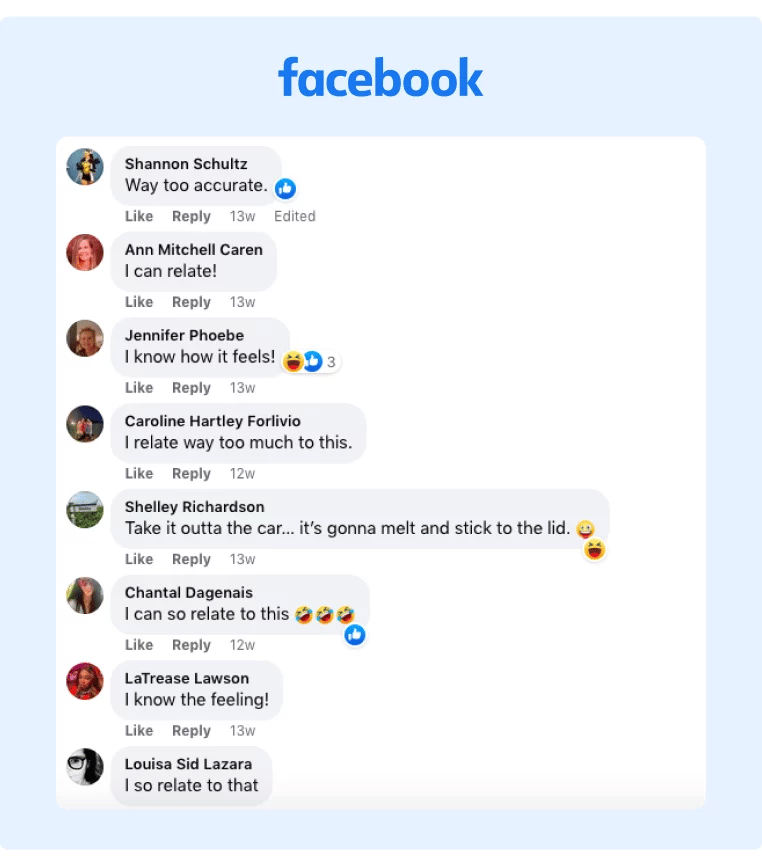
So if your content isn’t generating enthusiastic engagement, revisit your customer persona and reevaluate how you can create content that truly resonates with them.
Ahrefs
Creating engaging social media content is easier if you have an innovative or fun product. However, Ahrefs is an excellent example of how simple B2B SaaS companies can produce high social media engagement.
First, their executive team is highly active on social media, and it's a key lever they use for promotion.
For example, CMO Tim Soulo frequently posts about new product features and how you can use them. Then, the team jumps in and reshares these posts. As you can see in the example below, Tim created a quick tutorial on a product feature update, and then content manager, Joshua Hardwick, jumped in and retweeted it:
"SERP Comparison" - a new cool feature in @ahrefs! 😍
— Tim Soulo 🇺🇦 (@timsoulo) November 3, 2022
Compare SERPs for:
- Same keyword on different dates, to understand what changed.
- Two different keyword variations, to see how similar (or different) they are in the eyes of Google. pic.twitter.com/Q2Id5IBZ8j
Tim Soulo also frequently reposts content from other Ahrefs customers, which further encourages brand engagement:
Normally @timsoulo announces new features, but I'm stealing the Organic competitors report.
— Patrick Stox (SEOpedia) (@patrickstox) November 22, 2022
A competitive positioning map with traffic / traffic value, and the bubble size = pages. 😍
You can compare between dates to see how your market evolves. 📈📉
Great job @ahrefs team! pic.twitter.com/5MtgUIqvZO
While Ahrefs also posts consistently on the company page, most of the brand's social media success rests heavily on its employees.
If you consider that people use social media primarily to engage with other humans, it makes sense that content from executives is Ahrefs's primary engagement strategy.
So to duplicate Ahrefs's strategy, collaborate with your executive team and help them build up their personal brands to promote company initiatives.
While getting busy executives to engage frequently on social media may seem like a challenge, one way you can reduce the effort required on their part is to use a platform like GaggleAMP and assign specific post topics.
For example, you could create an engagement activity that asks them to answer one of the following questions on their personal page:
- How would you recommend people use a specific feature in our product to solve a common customer pain point?
- What is a new industry trend you're excited about and why?
- What did you learn in the last month that our customers would benefit from knowing?
- What is a commonly accepted "best practice" you disagree with and why?
- What is an experiment you recently ran that has shifted your perspective?
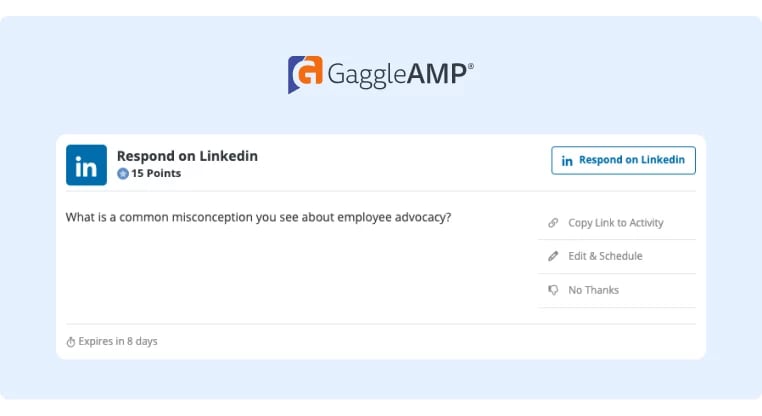
To see for yourself how GaggleAMP can help you build your executives' social media presence, schedule a demo today.
Chili Piper
Chili Piper is an excellent example of a company that truly understands how to make a corporate account social. Rather than posting promotional content and advertising product launches, Chili Piper gives individual employees access to the corporate account to post their stories.
This strategy has been excellent for generating more engagement and brand awareness. In fact, the average posts written in the corporate voice generate between 1 to 10 comments, while the average post from an employee generates between 20 and 60 comments. Here's an excellent example of an employee “hijacking” the corporate account:
So if your main goal is to generate more followers on social media, increase brand awareness, and show off your company culture, allowing employees to post directly to the company account is a great solution.
Stryker
Stryker is a medical device company that invests heavily in its social media presence.
Like the other successful corporate social media strategies we've discussed, their social media activity focuses primarily on culture-related posts.
For example, they frequently create posts about company events, employee successes, and fun corporate activities.
Here's a great example of a community initiative post:
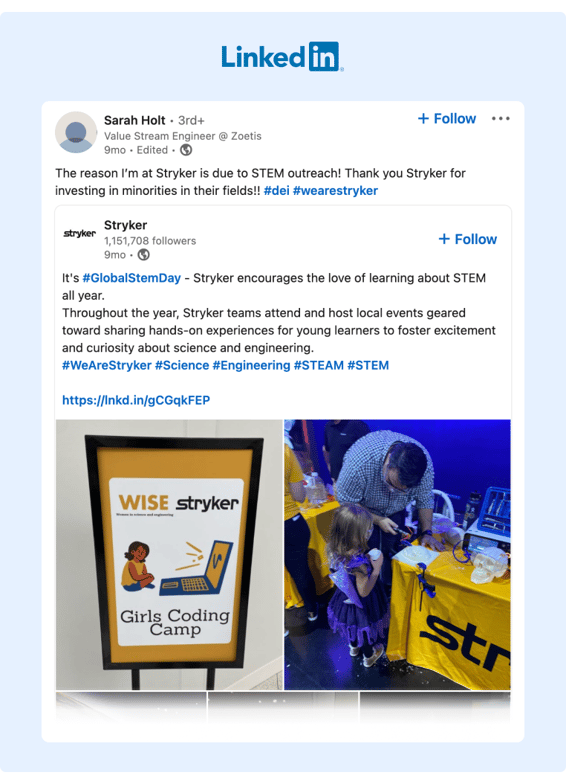
Stryker is also a GaggleAMP customer and leverages employee advocacy to further improve brand awareness and engagement.
For example, you can see that 25 people reposted this single LinkedIn post, many of whom are other Stryker employees:
Most of Stryker’s social media posts also have a humanistic theme. For example, the post above has a captivating narrative about the employee’s story with Stryker, and there are plenty of other examples where the company is investing in community-led initiatives.
So rather than just promoting your product, promote your company’s values as people naturally engage with this style of content on social media.
New York Presbyterian Hospital
New York Presbyterian Hospital is excellent at generating social engagement by sharing its patients' stories.
Here's an excellent example of a patient story they produced:
This post was bound to perform well because the message is powerful. However, you'll notice that it also follows all of the basic social media best practices, like:
- Creating a high-quality video with captions
- Using captivating copywriting to draw viewers into the post
- Incorporating a relevant hashtag
- Tagging other collaborators
This is a good reminder that you can easily grow your social media presence by simply creating a compelling message, delivering it with captivating storytelling, and following basic social media best practices.
Crumbl Cookies
There are plenty of different baked goods brands, though few have cultivated a social media following as loyal as Crumbl Cookies.
You can tell just from scrolling through the comments that people love both the brand and the product:

One of the key reasons why this brand has been so successful is its outstanding content strategy.
Rather than just posting discount codes or promotional offers, they created highly engaging videos that look like funny videos a friend might share. Here's a great example:
In addition, the production quality of each video of their cookies is on another level. Check out this video:

Crumbl Cookies further encourages engagement by actively responding to comments:

So if you’re struggling to increase engagement, go back to the basics and think about how you can elevate the content quality and authentically interact with your customers.
Upgrade Your Corporate Social Media Strategy Today
To summarize, corporate social media is all about establishing clear systems and processes to ensure each piece of content meets a certain quality standard and is published on time.
Once it is published, corporate social media managers have a secret weapon – a large workforce of employees who can amplify each piece of content.
So if you’re looking for a unique solution that can help improve corporate communication and ensure employees engage with your content, schedule a demo with GaggleAMP.











